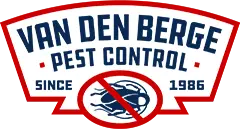
Contents
Imagine walking through your home, only to spot an unwelcome visitor scurrying across the floor. Indoor pests can disrupt your peace and pose health risks, but you have the power to take control. By implementing a few effective strategies, you can create a pest-free environment. Let’s explore five essential methods that will keep your home safe and enhance your overall comfort and well-being.
Key Takeaways
- Identify and seal entry points by inspecting for gaps around pipes, windows, and doors to prevent pests from entering your home.
- Maintain cleanliness by regularly sweeping, vacuuming, and wiping surfaces to eliminate food sources and minimize clutter.
- Implement natural pest deterrents like peppermint oil and lavender oil to repel spiders, mice, and other insects without chemicals.
- Use traps and baits effectively, placing sticky traps in dark corners and using bait stations to target specific pests.
- Consider professional extermination services for thorough inspections and customized treatment plans to ensure long-term pest control.
Identify and Seal Entry Points
One of the most effective ways to control indoor pests is to identify and seal entry points. Start by inspecting your home’s exterior, focusing on areas where pipes, wires, and vents enter.
Don’t overlook small gaps around windows and doors; these can be major pathways for pests. Use entry point identification techniques, such as observing pest trails or droppings, to pinpoint problem areas.
Once you’ve identified these vulnerabilities, it’s time for sealing gaps. Caulk, weatherstripping, or expanding foam are excellent materials for closing off spaces.
Make sure you pay special attention to the foundation, as even tiny cracks can invite unwanted guests. Remember, a proactive approach can save you from larger infestations later on.
Maintain Cleanliness and Reduce Clutter
While maintaining cleanliness and reducing clutter might seem like basic housekeeping tasks, they play an essential role in pest control. Regular cleaning helps eliminate food sources and nesting areas for pests.
Start by sweeping and vacuuming floors frequently, especially in kitchens and dining areas. Don’t forget to wipe down surfaces where crumbs may accumulate.
Decluttering is equally crucial. Use decluttering tips, like sorting items into “keep,” “donate,” and “discard” piles. A tidy space reduces hiding spots for pests, making your home less inviting to them.
Store seasonal items in airtight containers, and avoid stacking boxes or clutter in corners.
Implement Natural Pest Deterrents
After establishing a clean and clutter-free environment, it’s time to incorporate natural pest deterrents into your indoor pest control strategy.
Utilizing herbal repellents and essential oils can effectively keep unwanted pests at bay without harmful chemicals. These natural solutions protect your home and create a pleasant atmosphere.
Consider using the following deterrents:
- Peppermint oil: A strong repellent for spiders and mice.
- Lavender oil: Effective against moths and flies while adding a soothing scent.
- Cinnamon: Sprinkling ground cinnamon can deter ants and other insects.
- Neem oil: A potent natural insecticide that targets various pests.
Use Traps and Baits Effectively
To effectively manage indoor pests, using traps and baits can be a game-changer. Sticky traps and bait stations are essential tools in your pest control arsenal. They help catch pests and allow you to monitor infestations. To maximize their effectiveness, strategically place traps and baits in areas where pests are commonly seen, such as near entry points and food sources.
Here’s a quick reference table to guide you:
| Type of Trap/Bait | Best Use | Tips |
|---|---|---|
| Sticky Traps | Rodents, insects | Place in dark corners |
| Bait Stations | Ants, cockroaches | Keep away from pets |
| Electronic Traps | Mice, rats | Use in high-traffic areas |
| Glue Boards | Spiders, insects | Change regularly |
| Poison Baits | Larger infestations | Follow safety precautions |
Seek Professional Extermination Services
When you’re dealing with a persistent pest problem that DIY methods can’t resolve, seeking professional extermination services is often the best course of action.
These experts provide effective pest management solutions tailored to your specific needs. By reaching out for expert consultations, you ensure that the right strategies are employed to eliminate pests and prevent future infestations.
Here are a few reasons to take into account professional help:
Thorough inspections: Professionals can identify hidden infestations you might miss.
Customized plans: They develop targeted strategies based on the type of pests and your home’s layout.
Safe treatments: Experts use methods that prioritize your family’s safety and the environment.
Long-term solutions: They don’t just eliminate pests; they help prevent future issues.
Investing in professional extermination services gives you peace of mind, knowing your home is pest-free and protected.
Final Thoughts
By implementing these five strategies, you can greatly reduce the chances of indoor pest infestations. Staying proactive—by sealing entry points, maintaining a clean environment, using natural deterrents, and effectively utilizing traps—can help you keep your home pest-free. If issues persist, don’t hesitate to contact a professional. A safe, comfortable living space is worth the effort!
Recent Posts
7 Essential Tips for Professional Flea Extermination
You might think tackling a flea infestation is overwhelming, but it doesn’t have to be.
Effective Local Roach Extermination for Homes
Dealing with roaches in your home can be frustrating and challenging. Recognizing the signs of
Effective Flea Extermination for Your Pets
Just as a knight must armor up to battle a dragon, you need a solid
